

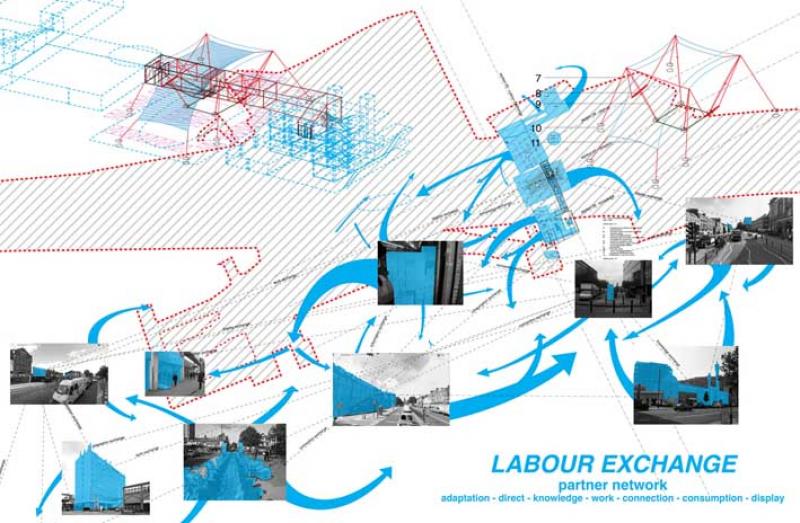
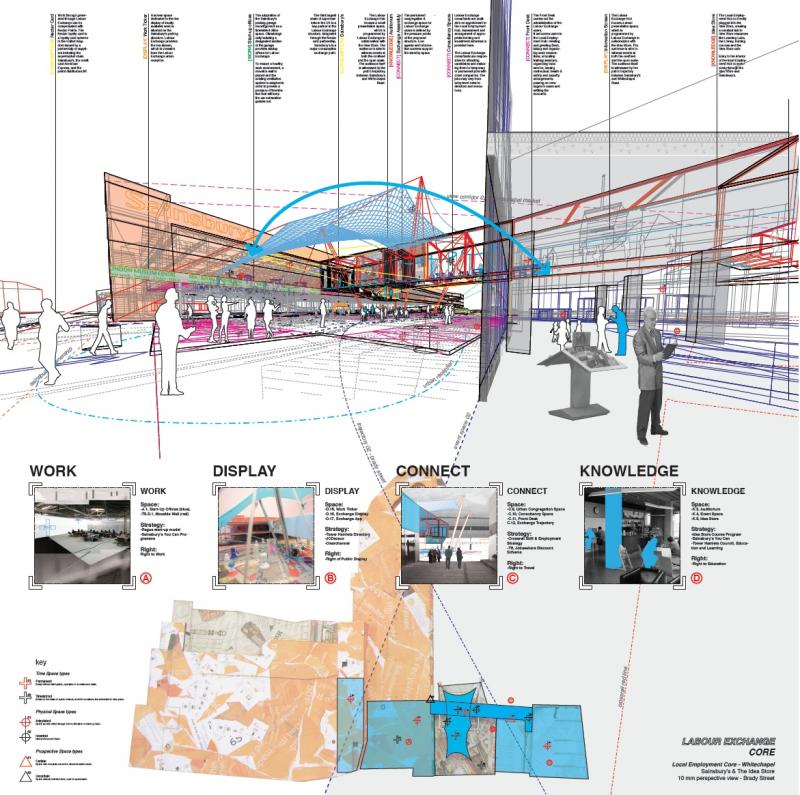
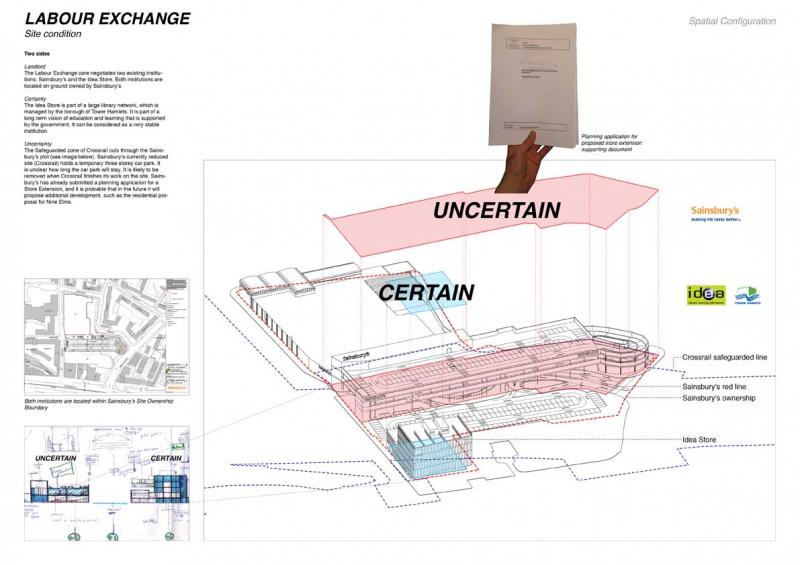
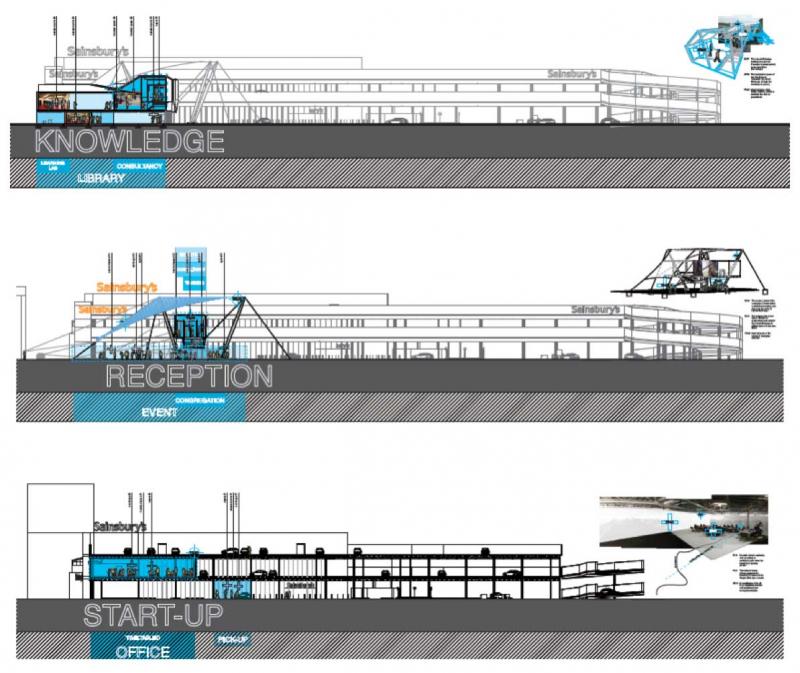

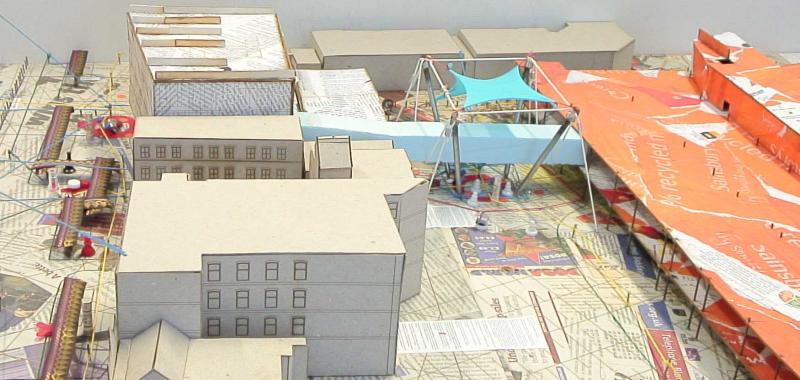
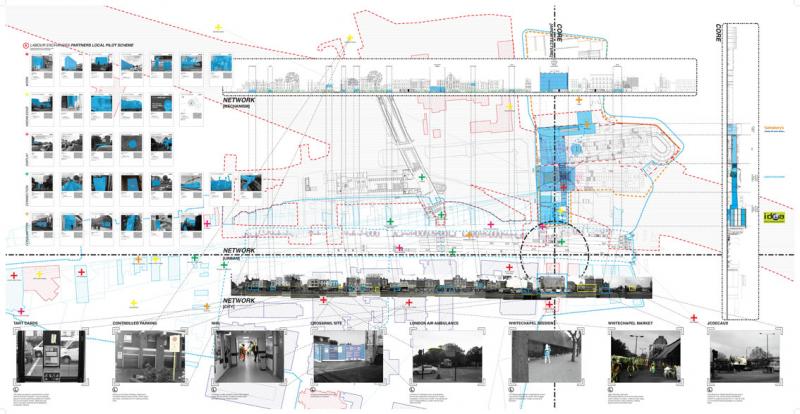
21st century Welfare: Labour Exchange®
Labour Exchange® provides an alternative to the corporate mechanisms that currently shape our community centers. By anticipating current events, it proposes a composite urban strategy that uses with mechanisms of engagement & control in relationship to work.
The Employment Core is a horizontal linear building situated in the Crossrail red zone ion between Sainsbury’s and the Idea Store. The building partially adapts the existing urban cores and inserts a new physical structure, hereby creating a third institutional space. A micro economy is established with expert knowledge on both employment as well as on training.
The re-assessment of Whitechapel’s potential resources, led to the activation of existing spaces of work, knowledge, display, connection and consumption, creating a network for exchange that expands the architectural construct into its urban territory.
Generating its structure from the real as well as the planned condition of the identified territory, Labour Exchange® advocates for a curatorial approach to urbanism. It consists of 3 major components: an Employment Core, the Exchange® Network and a Right to Work.